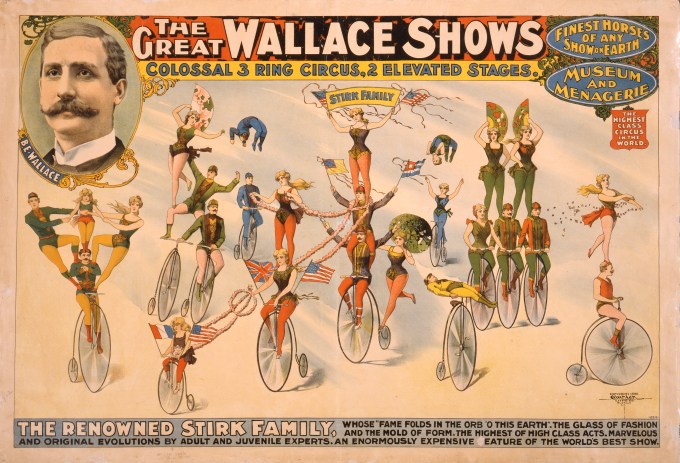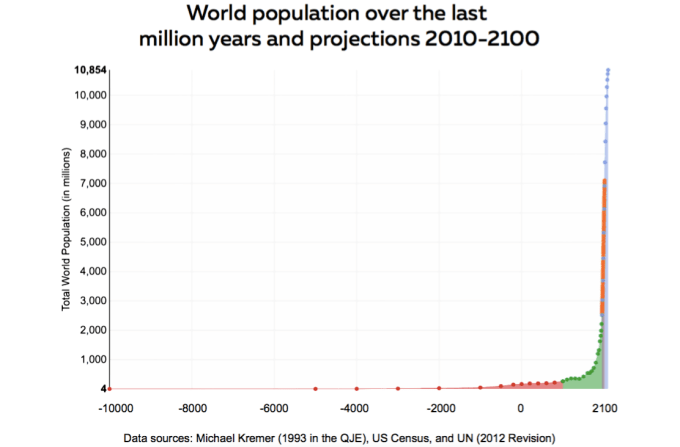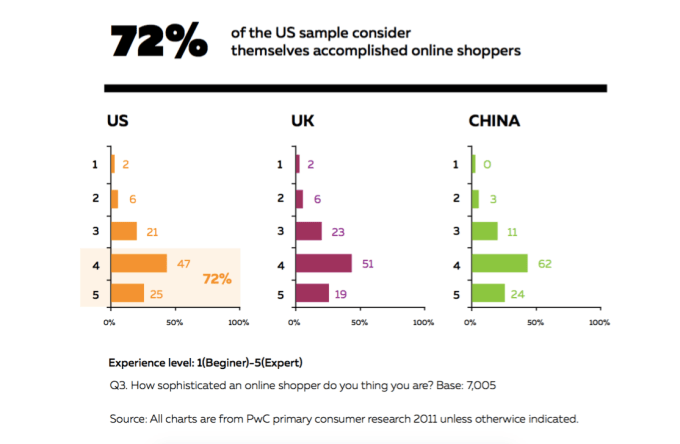Lead generation has come a long way. According to one analysis, lead generation dates back as far as 27 BC, assuming, of course, that we accept that the Roman trade market was the original lead generation platform for traders. The way in which leads were developed during Roman times was through word of mouth.
By spreading information via word of mouth, people with a network of connections trade information and recommendations based on experience. This still happens today. You may ask your neighbor who they hired to remodel their kitchen or ask a friend which doctor they suggest you visit, but do you seek references for many other reasons? You probably don’t.
As technology advances, the way in which leads are acquired also changes. Nowadays, when you need to buy something specific you rely on the Internet. It is the ultimate convenience, even easier than asking someone you know, and accessible to you wherever you are — at home, at work or on the go. Now that the way in which we seek information has changed, the way in which we receive information is different, as well. Before understanding how far we’ve come today, and where we’re going, we must understand where lead generation started.
The ages of technologies
Newspapers became available to the U.S. public in the early 18th century (slightly earlier in Europe). This was the first way for information to be spread throughout society in an organized and official manner. As the public’s demand for free information grew, newspaper owners realized the opportunity to charge for advertisements. The readers were enjoying the ability to access information, and the advertisers found a new outlet for generating leads.
At the end of the 18th century, technology continued to progress. New printing technology allowed the opportunity for advertisers to print illustrated posters, creating an additional way to reach targets and generate leads. Around the 1830s, billboards were introduced in the United States and, by 1860, billboard advertising established itself as a separate industry.

In 1864, breakthrough telegraph technology was leveraged to reach wealthy American households with marketing messaging. While this was mostly spam, it was still a valid lead generation model and resulted in the classification of two advertising extremes: spam and relevant. According to Time magazine, 78 percent of today’s emails are spam. This coincides with the Pareto Principle, where 20 percent of adequate emails naturally generate 80 percent of spam emails.
The first radio commercial was broadcast on WEAF in New York in 1922; in 1941, the first TV commercial went on air; in 1950, the door-to-door model became popular. The list of new lead generation models continues, with each new model more sophisticated than the next. Call-center marketing arose in the 1960s, and, in 1969, the first Super Bowl commercial became available, followed by infomercials in 1984.
The computer age
The next evolution was the introduction of computers and, later, personal computers (in the mid-1980s). This was the beginning of a revolution: desktop publishing in 1985, the introduction of CRM systems in 1990, the first web page in 1991, the first web banner in 1992, the first search engines and online marketplaces appearing in 1995, Internet viral marketing in 1996, the creation of Google in 1998, social networks in 2003 and YouTube in 2005.
Almost each year after 2004 we have witnessed a new avenue for lead generation. Smartphones created the opportunity to broaden reach and access individuals directly, mobile apps allow for brands to engage with consumers in an entirely new way and social media platforms such as Facebook and Twitter create an opportunity for brands to target specific consumers based on their likes and dislikes.
The implementation of technology is dictated by entrepreneurs.
If we look at the number of years between each step of lead generation models, we see the following pattern: 1700, 100, 50, 34, 58, 19, 9, 10, 9, 5, 5, 1, 1, 3, 1… 1. The pattern suggests that the intervals between the evolutionary steps in lead generation models are shrinking in a progressive manner — and in a mirrored parallel with technological progress. Yet technology not only shapes the form of lead generation models from the marketer’s point of view, but also from the consumer’s point of view, raising new trends and demands.

In other words, technological abilities are dictated by innovation. However, the implementation of technology is dictated by entrepreneurs, who, based on research or a want to innovate, invent solutions that in turn grants them large valuations.
The empowering age
Uber, established in 2009, introduced their lead generation model:
“Uber is calling itself a ‘lead generation’ app that connects buyers and sellers — in this case, people who want rides and drivers who sell them. So Uber and other ride-hailing services are actually similar to eBay and Etsy. Lead generation platforms such as Uber similarly coordinate transactions between drivers and passengers,” wrote Professor Justin McRary, an expert hired by Uber.
This model is brilliant. Not only did it prove to be extremely profitable and passed eBay in terms of speed of growth, but it created an anthropological shift in the behaviors of society, which resulted in the spread of on-demand services and the economy of sharing. So what are the impacts of the “Uber effect?”
About 53 million, or 34 percent, of American workers are now freelancers, and technology is one of the key forces helping the majority of them find work, according to a recent survey released by the Freelancers Union and Elance-oDesk, a freelance platform.
Technology and entrepreneurs shape the market so consumers can benefit from competitive prices. Each new competitor must present supreme or diverse value in order to have a sustainable business model and service. In other words, the quality of the leads should be better or the cost should be reduced.
This technology, which combines freelance or on-demand work, can result in top financial achievements. This is a testament to companies such as Uber ($62 billion) and Airbnb ($25.5 billion), who lead the stable of unicorns. But what about smaller companies? What about the other startups that utilize this same lead generation model?
Carwow, a startup that raised a £18.4 million seed round, empowers consumers by providing information to users in their search for a new car. This service compares a variety of makes and models of different vehicles, while allowing consumers to see what dealers are offering in their area and at what price.
Consequently, dealers receive qualified leads while the consumer receives the best deal. The service is free for consumers and available for purchase by dealers who desire to be in the system. Thanks to carwow’s technology, dealers are forced to adjust to market conditions that are favorable to the customer. It is clear from carwow’s success over the past six years, and completion of Series B funding, that this lead generation model is effective.
MyDealerOnline, which received $2.6 million in funding, is another company empowering car buyers. The service helps consumers purchase used vehicles at the best possible price, while providing dealers with the most qualified leads. The basis of the idea is that cars are sold at the best prices at auction; however, under U.S. law, vehicles from auctions can only be purchased by licensed dealers. This forces consumers to purchase only the vehicles that dealers have in stock. MyDealerOnline’s technology links vehicle auctions to dealers.
Entrepreneurs need to be adaptable to the continuously evolving technology.
This enables dealers to present vehicles from auctions directly to consumers in order to eliminate the need for dealers to buy first. According to an Edmunds survey, 100 percent of smartphone holders use their phones for car shopping activities, including comparing prices. With MyDealerOnline’s technology, dealers can present their offering directly to a consumer’s smartphone, tablet or desktop. Now, consumers can learn about the best deals from auctions and utilize sales professionals that can get them the best price.
Other companies from the same industry take advantage of this model, as well. Beepi raised nearly $150 million in their mission to provide qualified leads to people who want to sell their car directly to other individuals, completely eliminating the need for a dealer. Beepi knows that a major barrier for this type of transaction is the vehicle registration process — which is why their business model provides the guarantee of cash back in order to streamline the process and help close more deals.
Many industries have made improvements to their lead generation models, as can be seen by these automotive and hospitality examples. Other unconventional examples are with companies who sell private jets, operate research laboratories, lend money and supply home improvement services.
JetSmarter, the fastest growing jet company in the world, works essentially like Uber for the sky. Jet operators find qualified leads, while consumers receive instant prices for a private jet or seat on a shared jet.
While you’re at it, why not also book a room in a fancy hotel? Recharge allows users to find and book hotel rooms, with one small twist: Those who use Recharge can book rooms for any period of time, even just for 10 minutes to use the shower or for 30 minutes to take a quick nap. Hotels are now finding guests at a relatively high rate per hour, while users are easily finding the convenience they seek.
Convenience from these lead generation services not only gets you to your hotel and finds you a room, but can make sure you are well fed during your visit! Try using DoorDash, the app that delivers food from participating restaurants directly to your door.
Private jets, 10-minute hotel rooms and food delivery — why stop there? If you are a scientist and need to rent a lab, Science Exchange may be of interest to you. After receiving $25 million in Series B funding, Science Exchange has created a marketplace for researchers to find the right lab services for them, considering most don’t have the resources, time or money to create their own laboratory. These laboratories are now able to receive leads stemming from private, academic, government and manufacturing segments of the pharmaceutical industry seeking to outsource their research. And it’s a proven success — the company has grown 500 percent in the past year.
Human purchase logic
As of a result of consumers being educated by a range of companies, from Uber to Netflix, the shopping habits of purchasers have evolved. According to a PwC report from 2011, individuals have moved toward the “Multichannel Shopping” pattern, where consumers shop from one to five channels in order to identify the best solution in each industry and for each product. In 2011, 65 percent of U.S. shoppers already used at least two channels, and 21 percent use four or more channels to shop online.

As can be seen in the chart above, 72 percent of U.S. consumers consider themselves sophisticated consumers who check four or five online channels to find the best deal. In 2011, PwC forecast the following:
“It is clear from our results that retailers need to better align their business operating models with consumer sophistication and expectations. Closing this gap will require a significant increase in agility and flexibility by retailers, driven by a deeper understanding of their customers… The successful retail business model of the future will be different from that of the past. The winners will be those who have recognized these trends and who are building agile organizations capable of delivering experiences that are consistent across channels with recognizable and comforting similarities, and are also consistently impressive and up-to-date.”
A wave of startups and organizations aim to be at the forefront of consumer trends — providing the best offerings and, as a result, becoming industry leaders. Tens of thousands of startups of all sizes are established each year — some successful, some not, but all of which aim to introduce solutions that become the reference point for future companies.
The innovation occurring daily is empowering both businesses and consumers alike.
An example of a reference point company is Amazon. Amazon was launched in 1994; with it started the Amazon Effect, changing the world of e-commerce and retail while creating something for other sites to emulate. Amazon supported every industry and sold more than 120 million different items. Amazon provided a service unlike any other at the time, offering customers complete information on products and prices, and convenience. How many people did Amazon attract with this new model?
“Amazon defines active customers as accounts that have made a purchase in the past 12 months. Active customers generally have valid credit cards on file. With roughly 244 million in that category, Amazon more than doubles eBay’s PayPal payment service, which has 110 million active customers, but it sits behind Apple, which has 800 million customers with iTunes accounts,” according to GeekWire.
Consumers empowering or disempowering lead generation models
Today we shift between two extremes of lead generation models: one which consumers are empowered and the other where consumers are disempowered. Take for example taxi apps; there were at least 10 of them as of 2013. The only place they are relevant is where there is no Uber or similar service. Everyone knows ridesharing services defeat taxis in several categories, including ride cost, car quality, app service, payment, etc. Most importantly, drivers choose to work for rideshare companies as opposed to electing to work as a taxi in the same way that riders choose Uber over taxis. This is a win-win model, or an empowering model.
The resources for rideshare drivers are unlike any other. This is why ridesharing companies consider themselves “lead generation apps.” Because of the transparency of the technological platform, combined with big data, drivers are presented with information to increase lead conversion for the most desired areas for pickup, which, if targeted, will result in drivers making more money. The services also share information about how rates vary at given times and when prices are surcharged during busy hours or when events are occurring. Drivers also have constant access to their ride history, being able to easily see where they’ve driven, who they’ve picked up and what they’ve earned. A lot of value.
The taxi app model is disempowering; the riders have no real advantages. While they do have access to an app, there is less availability of drivers and the overall service is poor when compared to Uber or Lyft. Additionally, taxi drivers are required to have a license, which limits the number of available drivers, making it harder for riders to find a cab.
Drivers of cabs are also not provided the same resources as those who work for rideshare apps. They cannot track their rides and are not provided information about how to improve their personal business in order to make more money. The taxi apps are like a parallel solution to simply calling a cab rather than an innovative solution that actually solves problems for riders or freelance drivers. This is almost a lose-lose model, where riders suffer and drivers remain unprofitable, a true disempowering model.
The same insight can be derived from hotel registration apps compared to Airbnb. The startup benefits homeowners and those seeking accommodations, and the service itself profits 6-12 percent per transaction. These parties are choosing to pool their resources to provide a means to satisfy each correspondent, thereby empowering each individual.
The future
Lead generation models have evolved throughout history as a result of new technology and ever-changing consumer trends. The computer and Internet age enabled a significant increase to the pace at which new lead generation models were introduced to the world. What once took hundreds of years to change, then weeks, then days, now takes hours to improve. The innovation occurring daily is empowering both businesses and consumers alike.
Today’s lead generation models can best be described as: free listings, pay per impression, premium listings, discounted deals, pay per interaction and pay per transaction. The problem we are seeing is that everyone is using the same lead generation model and competing in the same space. What we can learn from the past is that entrepreneurs need to be adaptable to the continuously evolving technology and embrace change in order to remain competitive and excel in their respective industries.
